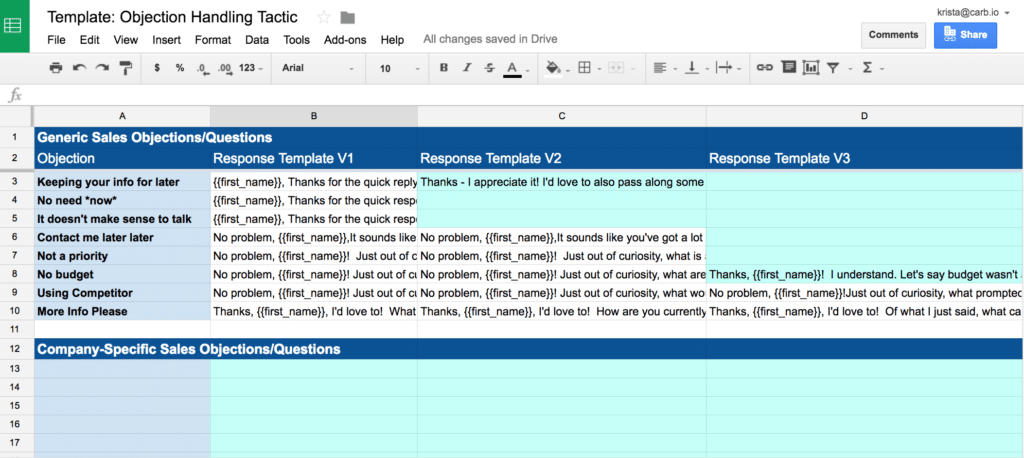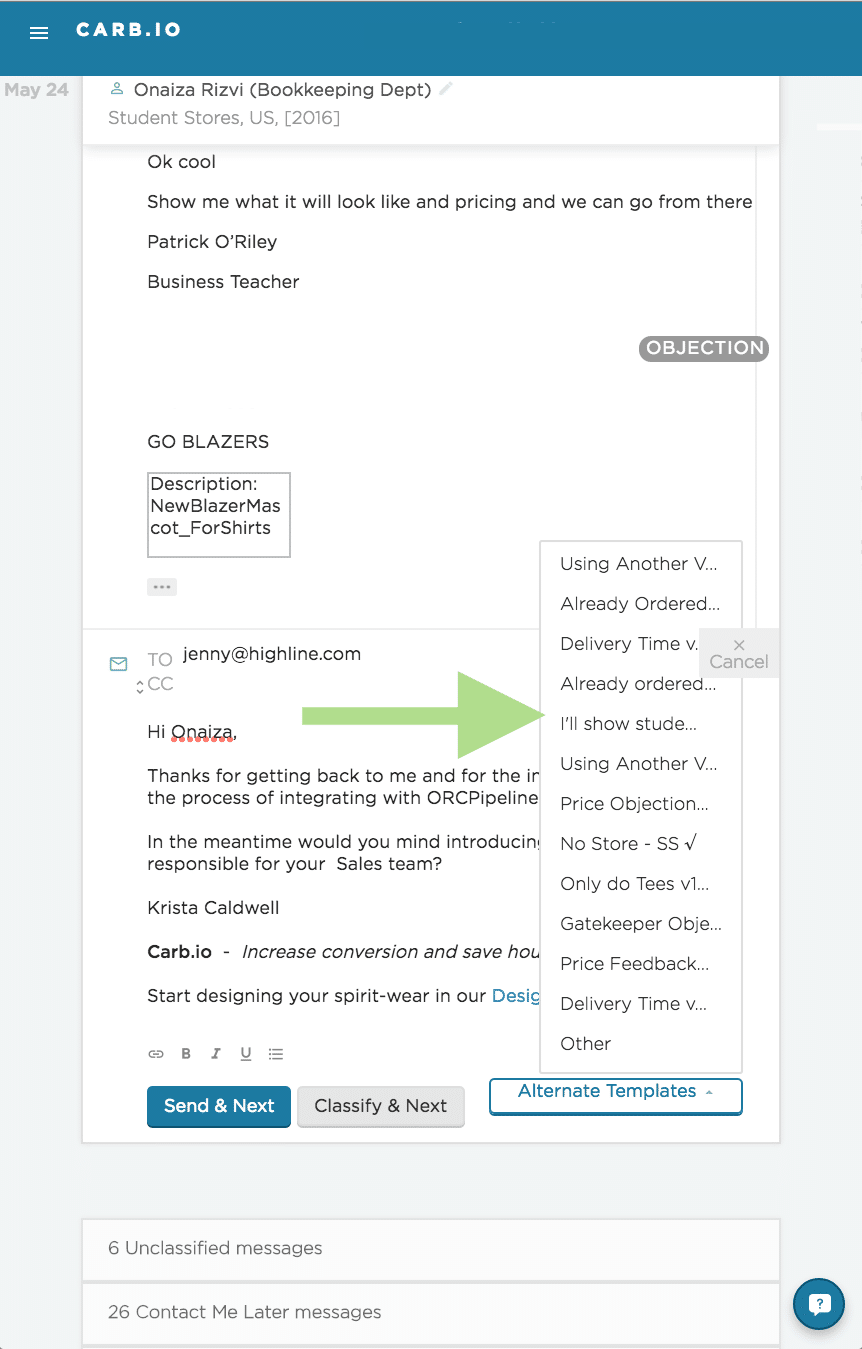Objection Deflection: Prospecting Enemy #1
This is a guest post by Krista Caldwell, Account Strategist at Predictable Revenue and SalesHacker Vancouver Host.
Objection Handling: the Pain
Having battled in the trenches of SDR-dom, I know firsthand that responding to prospects’ dismissive or negative emails feels futile. It requires the most research, thinking, and time but seems to generate the least results!
However, ignoring non-positive responses can flunk your campaign and stunt your learning. Why isn’t this campaign converting? Where are all my qualified prospects? Herein lie the answers.
Objection Handling: the Gain
Prospectors receive roughly twice as many Neutral or Negative responses as positive responses, so even a small lift in Neutral and Negative conversion can super-size your pipeline. #closecloseclose
Handling objections is also imperative to learning. No doesn’t mean “NO NEVER EMAIL ME AGAIN.” Some No’s really mean, “that doesn’t sound valuable”, which assumes the prospect understood the message in the way you meant it. Responding can help you determine whether your message was understood as you intended. It will also help you learn from the confusion to create clearer, more compelling content that prospects can understand.
Other No’s mean “No we’re not a fit.” Understanding why prospects aren’t a fit will help you disqualify accounts that would otherwise take more of your time and improve targeting criteria for future campaigns. #learnlearnlearn
Objection Handling: Slain
Building a scalable system for handling objections will:
- Save your prospectors time and brainpower, freeing them up for higher value tasks
- Systematically increase conversion, letting you A/B test objection handling responses the same way you do initials and subject lines
Step 1: Collect the Data
If you use an automated platform like Carb.io to classify responses, collecting your neutral and negative responses might be as simple as requesting a report from your Account Strategist.
If you’re using Gmail or another platform, collecting your data will be the most time-consuming part of the process. But it’s worth it! Save it for a Friday afternoon when you’re mentally exhausted, or have a VA help out if you can, because it can be a little mind-numbing.
Click through the last 300 incoming messages from your Outbound campaign and copy/paste the message body of each Neutral/Negative responses into a new row of an “Objection Template” spreadsheet (Google Sheets Template here). You can exclude “hard no’s” such as “I can’t refer you”, or “unsubscribe me”, but be sure to include “soft-no’s” like “not a priority”.
If you don’t have a dedicated prospecting inbox, you can cut through the clutter with a Gmail Search filter that for messages “to:your@email.com” with the subject line “re:{{subject line}}”.
Step 2: Analyze and Sort Negative and Neutral Responses
Add a column to your spreadsheet called “Root Cause” (Google Sheets Template here). For each message, record the root cause of the objection.
Your Root Cause classifications will likely include common objections like:
- Bad timing
- No Budget
- Not a priority
- Sent me info
- What does it cost
- Using a competitor
- No Need now
- I’m keeping this for later
The responses will also probably include some objections specific to your company or campaign such as:
- Do you also do _______?
- Can you help me if we are a _______?
- What are some examples of _______?
- I use _______ and it’s probably not compatible, sorry.
- We don’t have a _______ department, sorry.
Create as many Classification Groupings as you need, but as few as possible. It’s okay if the messages don’t match up exactly, but highlight the same general objection or question.
Step 3: Craft your Templates
Create a new “Sheet” in your workbook with the columns: Objection, Response V1, Response V2, and Response V3 (Google Sheets Template here). Record each of your Objection Classifications to a row of the spreadsheet.
Engage your Account Executives, prospectors and marketing team to draft three possible responses to each objection. Someone at your company probably has most of the templates you’ll need already, but it’s important to test a few versions of each.
The best objection responses are short, simple, written in conversational language, and end with a simple qualifying question that is clear and open-ended (ex: which CRM do you use?”.
Some of the most useful content to for Objection Response Inspiration includes:
- This Incredibly Useful Sales Tool Is Totally Free (Geoffrey James, Inc)
- 4 Email Templates to Handle Sales Objections (Yesware)
- 24 Responses to the Dreaded Sales Objection “It Costs Too Much” (Emma Bruden, Hubspot)
- How to answer the 5 most common sales objections (Jim Kim, The Idea Hunters)
Step 4: Measure & Iterate
In order to generate meaningful A/B test data on your templates, you’ll need your prospectors’ commitment to use the templates with limited customization.
Share the templates with your Prospecting team, collect their feedback, and communicate how sticking to the templates will:
- Save their time
- Generate data on which Response Handling template is most effective to improve conversion
When you’re ready, upload the templates to your Pipeline Automation Platform if you have one, or have your prospecting team pull templates from your Google Sheet and record “Times used” and “Times converted” for each template.
Et voila! Building Objection Handling Templates requires some dirty data collection and wrangling, but will systematically improve conversion at one of the biggest prospecting bottlenecks and save hours of your team’s time.
Let us know how it goes!
Are you surprised with the objection data you collected?
What objection templates convert at the highest rate for your team?


